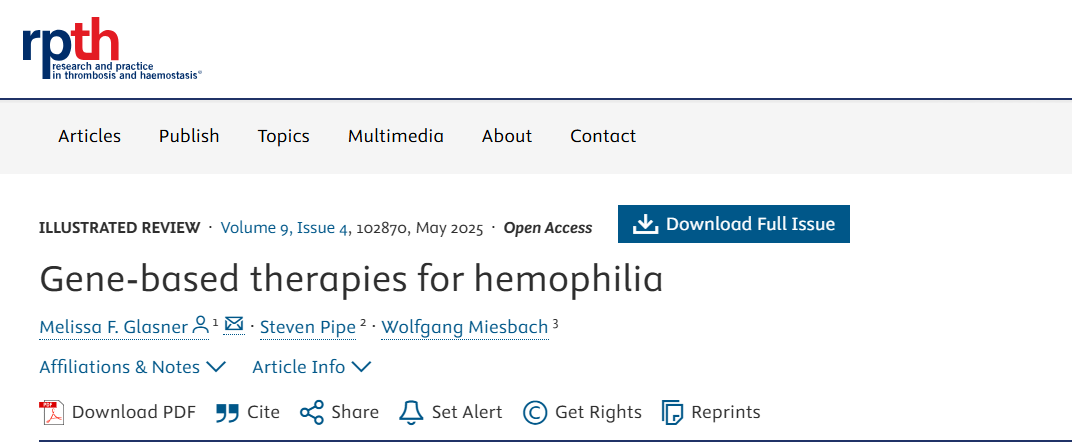
Wolfgang Miesbach: How to Better Understand and Explain Gene Therapy of Haemophilia?
Wolfgang Miesbach, Professor of Medicine at Frankfurt University Hospital, shared a post on Linkedin:
“How to better understand and explain gene therapy of haemophilia? Our latest publication, ‘Gene-based therapies for hemophilia,’ is now available as full-open access article in Research and Practice in Thrombosis and Haemostasis! This illustrated review provides a comprehensive overview of gene therapy for hemophilia A and B, highlighting how recent advances are transforming patient care.
Through 10 detailed figures, the article breaks down complex concepts into clear visuals, making it easier for both patients and healthcare professionals (HCPs) to understand:
· Mechanisms of gene therapy: How adeno-associated virus (AAV) vectors deliver functional FVIII or FIX genes to address the root cause of hemophilia
· Clinical outcomes: Visual summaries of trial results for therapies like valoctocogene roxaparvovec, etranacogene dezaparvovec, and fidanacogene elaparvovec, showing sustained factor production and reduced bleeding episodes
· Benefits for patients: Figures illustrate the potential for long-term freedom from regular infusions and improved quality of life
· Challenges and future directions: Visuals explain ongoing issues such as immune responses, hepatotoxicity, and strategies for expanding eligibility and durability
These figures are invaluable for:
· Educating patients about what gene therapy means for their treatment journey
· Empowering HCPs with up-to-date, evidence-based visuals to support informed discussions and shared decision-making
Read the full open-access article to explore all 10 figures and deepen your understanding of gene therapy’s promise for haemophilia patients.”

-
Nov 30, 2025, 13:23Ditte Vestergaard Hansen and Colleagues on Predictors of VTE Post-Stroke
-
Nov 30, 2025, 13:10Divyaswathi Citla Sridhar and Team Report Higher VTE Rates in Obese Users of Certain Estrogen-Progestin Combinations
-
Nov 30, 2025, 12:40Timos Papagatsias: Interested in Social Media in the Hematology Space?
-
Nov 30, 2025, 12:15Raphaël Liévin: In March 2026 SFH Will Host Its Very First Young EHA Research Meeting (YERM)!
-
Nov 30, 2025, 11:51Mohamed Aly Saad Aly on Microcatheters for Superselective Arterial Embolization
-
Nov 29, 2025, 18:55Ahmad Thuaimer: Success Story – Advanced Interventional Care for DVT
-
Nov 29, 2025, 17:37Almahdi Ali Explores Ipsilateral Paradoxical Thromboembolism at 22nd European Angiology Days 2025
-
Nov 29, 2025, 17:23Jack Shuang Hou Shares Major Neurology Updates This Week
-
Nov 29, 2025, 16:52Federica Fogacci on Further Strengthening Collaboration Within the Lp(a)CCELERATE Study
